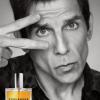What are people's thoughts on such procedures which are emerging and showing fairly fast and dramatic results thus far:
ABTRACT --
A study to determine the efficacy of combination LED light therapy (633 nm and 830 nm) in facial skin rejuvenation.
* Russell BA,
* Kellett N,
* Reilly LR.
Advanced Laser and Dermatologic Surgery Clinics PC, Beaverton, Oregon 97008, USA.
BACKGROUND: The use of visible or near infrared spectral light alone for the purpose of skin rejuvenation has been previously reported. A method of light emitting diode (LED) photo rejuvenation incorporating a combination of these wavelengths and thus compounding their distinct stimulation of cellular components is proposed.Objective. To assess the efficacy and local tolerability of combination light therapy in photo rejuvenation of facial skin. METHODS: Thirty-one subjects with facial rhytids received nine light therapy treatments using the Omnilux LED system. The treatments combined wavelengths of 633 nm and 830 nm with fluences of 126 J/cm(2) and 66 J/cm(2) respectively. Improvements to the skin surface were evaluated at weeks 9 and 12 by profilometry performed on periorbital casts. Additional outcome measures included assessments of clinical photography and patient satisfaction scores. RESULTS: Key profilometry results Sq, Sa, Sp and St showed significant differences at week 12 follow-up; 52% of subjects showed a 25%-50% improvement in photoaging scores by week 12; 81% of subjects reported a significant improvement in periorbital wrinkles on completion of follow-up. CONCLUSION: Omnilux combination red and near infrared LED therapy represents an effective and acceptable method of photo rejuvenation. Further study to optimize the parameters of treatment is required.
















































